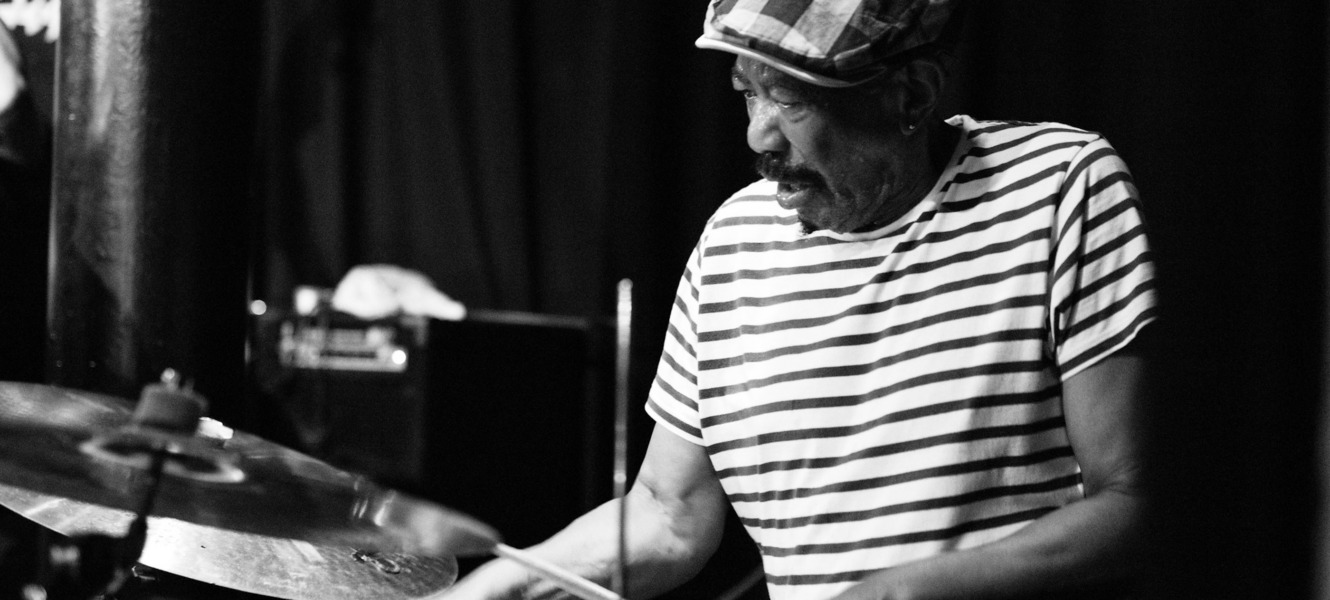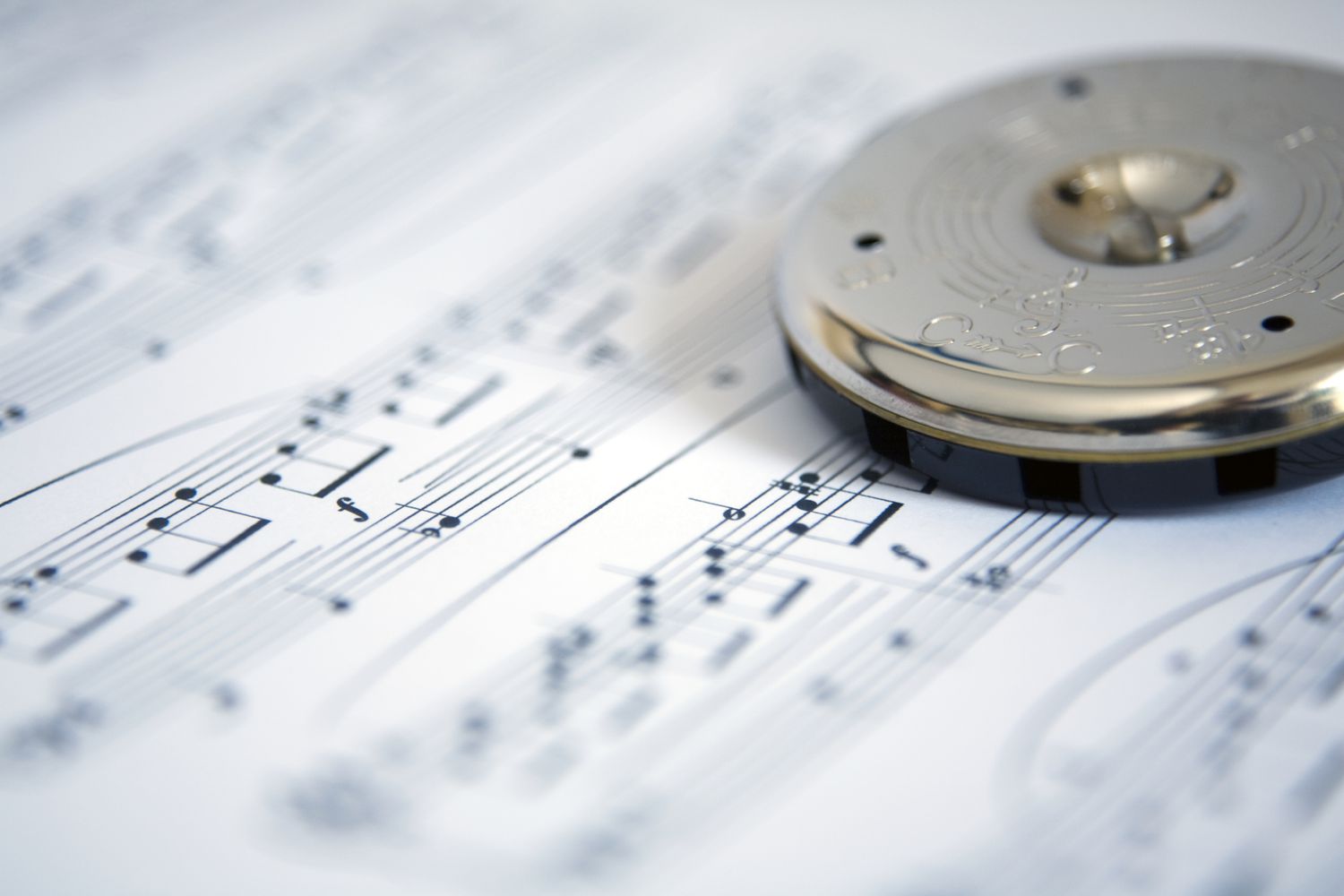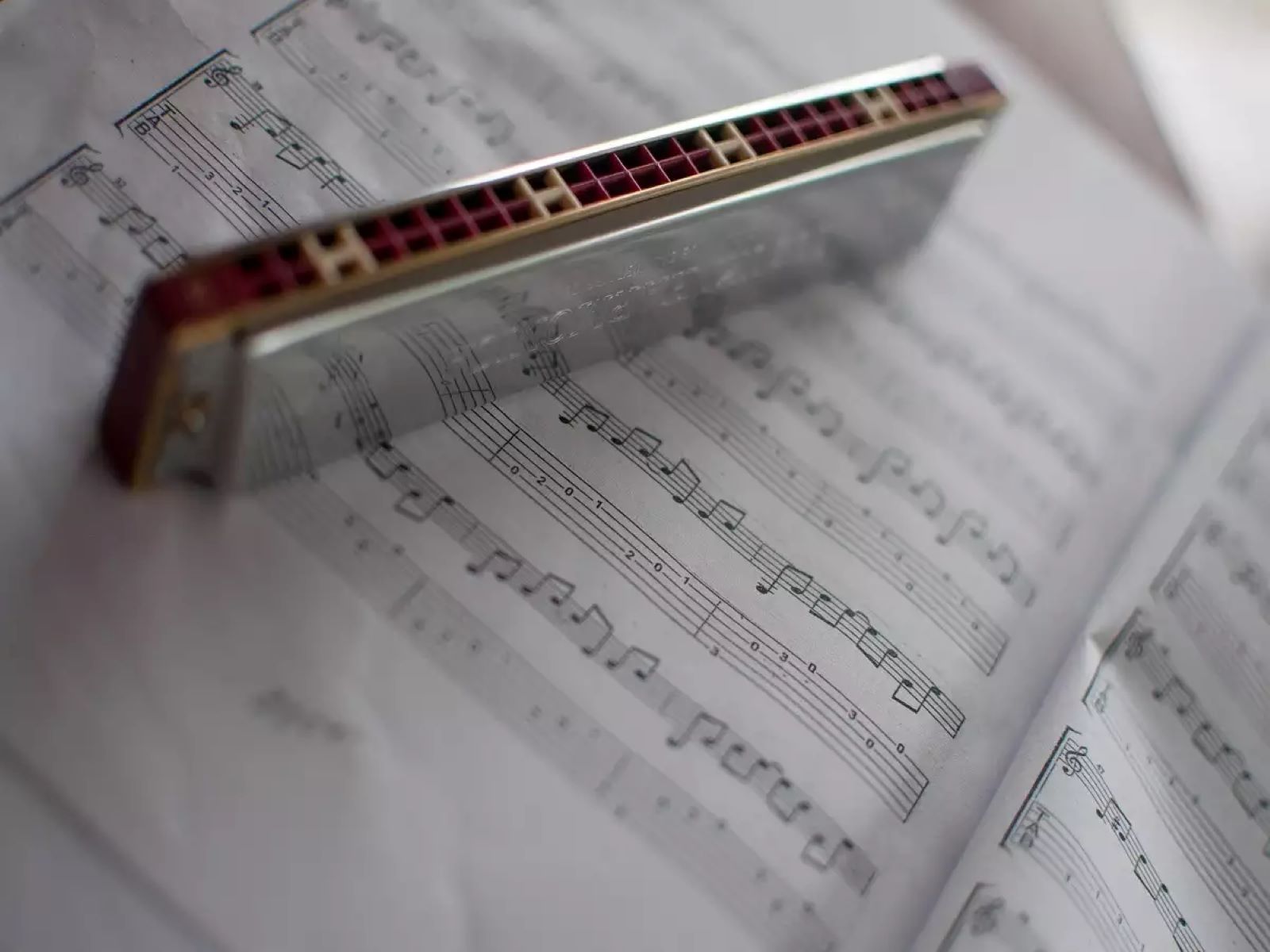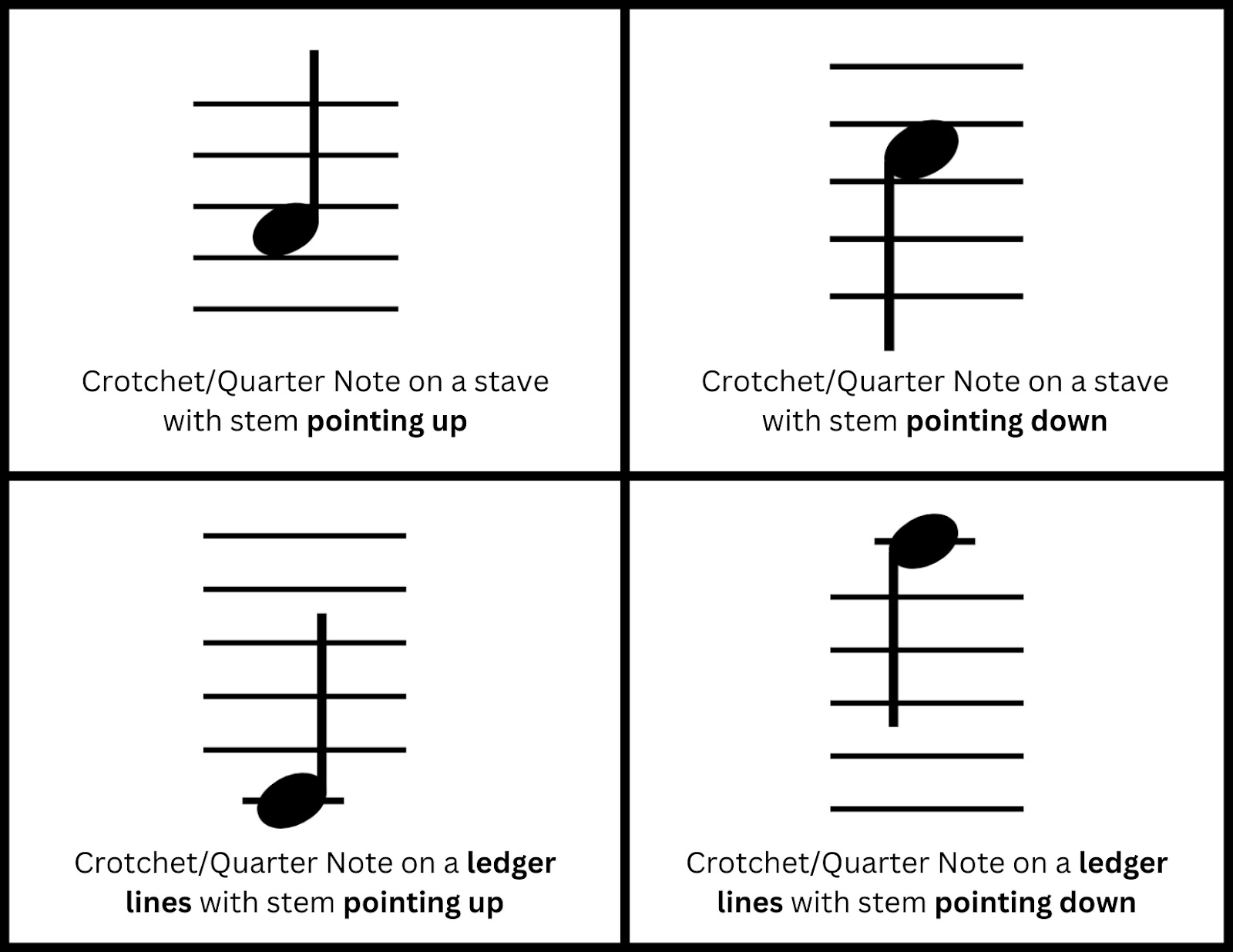Home>Events & Info>Note>In Music What Is A Blue Note


Note
In Music What Is A Blue Note
Modified: February 15, 2024
Discover the definition and significance of a blue note in music, its role in creating distinctive melodies, and its impact on various genres. Uncover the secrets behind this fascinating musical element.
(Many of the links in this article redirect to a specific reviewed product. Your purchase of these products through affiliate links helps to generate commission for AudioLover.com, at no extra cost. Learn more)
Table of Contents
Introduction
Music has the power to evoke emotions, tell stories, and create an atmosphere unlike any other art form. Within the realm of music, there exist various techniques and elements that contribute to its richness and diversity.
One such element that adds depth and character to musical compositions is the concept of a “blue note.” Blue notes are a fundamental component of many genres, including blues, jazz, and even popular music. These distinctive musical tones carry a unique flavor and play a pivotal role in shaping the overall sound and mood of a piece.
In this article, we will delve into the world of blue notes, exploring their definition, origin, characteristics, and significance in music. We will also showcase famous examples of blue notes in different genres and delve deeper into their relationship with the blues and jazz.
Whether you are a curious music lover or a seasoned musician, this article will provide valuable insights into the fascinating world of blue notes, shedding light on their importance and impact on musical compositions of various styles and genres.
Definition of a Blue Note
Before we dive into the history and significance of blue notes, let’s first understand what exactly a blue note is. In music, a blue note is a pitch or tone that is played slightly lower or “flattened” than the standard pitch of a musical scale. This slight lowering of the pitch gives the note a distinct bluesy or soulful sound.
Blue notes get their name from their association with the blues genre, where they are used extensively to convey a wide range of emotions, such as sorrow, longing, and melancholy. However, blue notes are not limited to the blues alone; they can be found in various other genres, including jazz, rock, and even classical music.
The specific pitch interval of a blue note can vary depending on the musical context and style. Generally, blue notes are created by playing a note located between the third and fourth scale degrees and/or the seventh and eighth scale degrees of a given scale. These altered notes add a touch of tension and complexity to the music, providing a unique flavor to the overall composition.
Blue notes are often played with expressive techniques, such as bending or sliding the note, adding vibrato, or using glissando. These techniques further enhance the emotional impact of the blue note and allow the musician to infuse their performance with personal expression and interpretation.
It is essential to note that blue notes are not strictly defined in terms of specific frequencies or intervals. Instead, they are more of a subjective concept, as the interpretation of a blue note can vary from musician to musician and from one musical context to another.
Now that we have a clear understanding of what blue notes are, let’s explore their origins and historical significance in music.
Origin and History of Blue Notes
The origin of blue notes can be traced back to African music traditions that were brought to America during the era of slavery. African musical practices, such as call-and-response patterns, improvisation, and expressive vocal techniques, heavily influenced the development of blues music and its use of blue notes.
During the late 19th and early 20th centuries, African-American musicians in the southern parts of the United States began incorporating these distinctive pitch variations into their music. This resulted in the birth of the blues genre, where blue notes became a defining characteristic.
Blue notes played a significant role in expressing the hardships, struggles, and emotions of African-Americans living during that time. The flattened pitch of the notes added a sense of longing, sadness, and soulfulness to the music, encapsulating the essence of the African-American experience.
As blues music gained popularity and spread across the country, the influence of blue notes started to permeate other genres. Jazz, another genre deeply rooted in African-American musical traditions, embraced the use of blue notes and incorporated them into improvisational solos and melodic phrases.
Over the years, blue notes also found their way into popular music, as musicians from various backgrounds adopted them as a means of adding depth and emotion to their compositions. Artists like Ray Charles, B.B. King, and Jimi Hendrix have utilized blue notes in their music, showcasing their versatility and impact across different genres.
Today, blue notes remain an integral part of contemporary music, finding their place in a wide range of styles and genres. Whether it’s the soulful bends of a blues guitar, the melancholic wail of a saxophone in a jazz ballad, or the emotive vocal runs in a pop song, blue notes continue to captivate listeners and add that touch of raw emotion that makes music truly impactful.
Now that we understand the origins and historical significance of blue notes, let’s explore their characteristics and how they contribute to the overall musical experience.
Characteristics of Blue Notes
Blue notes possess several distinct characteristics that set them apart from other notes in a musical composition. These characteristics contribute to the unique and soulful quality that blue notes bring to the music.
One of the primary characteristics of blue notes is their slight pitch modification. Blue notes are often played at a lower pitch than the standard note of the scale. This subtle flattening of the pitch creates a sense of tension and adds a touch of “bluesiness” to the music.
Another characteristic of blue notes is their expressive and emotive nature. Since blue notes are often associated with feelings of sadness, longing, and melancholy, they are played with a specific emphasis on expressive techniques. Musicians may use techniques such as bending the note, adding vibrato, or employing slides to create a more poignant and heartfelt sound.
Blue notes also have a sense of unpredictability. In many musical compositions, blue notes are strategically placed to catch the listener off guard and create an element of surprise. In this way, blue notes inject a sense of spontaneity and improvisation into the music, allowing for increased emotional depth and connection.
Furthermore, blue notes can be utilized in various musical contexts, adding their unique flavor to both melody and harmony. They can be incorporated in melodic lines as embellishments or played simultaneously with other notes to create rich and complex harmonies.
It is important to note that the specific characteristics of blue notes may vary depending on the genre or musical style. In blues music, for example, blue notes are often bent or slurred to create a distinct vocal-like quality. In jazz, blue notes serve as a foundation for improvisation and melodic variation, allowing musicians to explore different tonal possibilities.
Ultimately, the characteristics of blue notes contribute to the overall mood and atmosphere of a musical piece. They bring a sense of depth, emotion, and unpredictability, making the music more captivating and resonating with the listener on a profound level.
Now that we have explored the characteristics of blue notes, let’s delve into their role and significance in different genres of music.
Role of Blue Notes in Music
Blue notes play a crucial role in shaping the overall sound and impact of a musical composition. They contribute to the mood, emotion, and expression of the music, allowing for a deeper connection with the listener.
One of the primary roles of blue notes is to add a sense of authenticity and rawness to the music. They capture the essence of human emotion and experience, conveying feelings of sadness, longing, and resilience. Blue notes bring a level of vulnerability and honesty to the music, making it more relatable and relatable to those who resonate with the emotions being expressed.
Blue notes also serve as a means of personal expression for musicians. They provide an avenue for musicians to infuse their own interpretation, style, and improvisation into a piece. Whether it’s a guitarist bending a note, a vocalist adding soulful runs, or a saxophonist creating melodic variations, blue notes allow musicians to convey their unique voice and emotions.
Additionally, blue notes contribute to the overall structure and narrative of a musical composition. They can be strategically placed to create tension and resolution, building anticipation and delivering a powerful emotional impact. In blues music, for example, the use of blue notes follows specific patterns and progressions, creating a recognizable and engaging musical structure.
Moreover, blue notes are often utilized to create contrast and highlight specific moments within a composition. By introducing a blue note amidst a series of standard, non-altered notes, the listener’s attention is immediately drawn to the unique and emotive quality of the blue note. This contrast adds depth and interest to the music, keeping the listener engaged and captivated.
Furthermore, blue notes have played a significant role in shaping various genres of music. They are deeply rooted in the blues and jazz traditions but have also permeated other genres such as rock, soul, and pop. Blue notes have become synonymous with the expressive and emotional elements of music, and their presence can evoke a sense of nostalgia and familiarity in listeners.
In summary, the role of blue notes in music is multifaceted. They bring authenticity, personal expression, and emotional depth to the music. Blue notes contribute to the narrative and structure of a composition while creating contrast and engaging the listener. Their impact extends beyond specific genres, making them a versatile and powerful tool in the creation and enjoyment of music.
Now, let’s explore some famous examples of blue notes in various genres.
Famous Examples of Blue Notes in Various Genres
Blue notes have left an indelible mark on the world of music, influencing numerous genres and artists throughout history. Here, we showcase some famous examples of blue notes in various genres:
Blues:
In the blues genre, blue notes are foundational. Artists such as B.B. King, Muddy Waters, and Robert Johnson showcased their mastery of blue notes in their expressive vocal performances and soulful guitar solos. B.B. King’s iconic bends and vibrato on the guitar strings exemplify the power and emotion of blue notes in the blues.
Jazz:
Jazz music is synonymous with improvisation and the use of blue notes. Artists like Miles Davis and Louis Armstrong incorporated blue notes into their trumpet playing, creating soul-stirring melodies that are instantly recognizable. Billie Holiday’s haunting vocal interpretations also showcased her impeccable command of blue notes, contributing to the emotional depth of her music.
Rock and Blues-Rock:
Blue notes have heavily influenced the world of rock music, particularly in the blues-rock genre. Eric Clapton’s iconic electric guitar work, including his solos in “Crossroads,” beautifully demonstrates the bluesy sound and expressiveness of blue notes in a rock context. The Rolling Stones, Led Zeppelin, and Jimi Hendrix also incorporated blue notes into their guitar-driven rock songs, adding an extra layer of emotion and intensity.
Soul and R&B:
The soul and R&B genres owe much of their soulful nature to the use of blue notes. Artists like Aretha Franklin, Stevie Wonder, and Etta James incorporated blue notes into their vocal performances, infusing their soulful melodies with a touch of grit and longing. These blue notes added depth and emotion to their songs, making them timeless classics.
Pop Music:
In modern pop music, blue notes can be found in both vocal performances and instrumental solos. Artists like Amy Winehouse, Adele, and Sam Smith use blue notes to add a soulful quality to their singing, enhancing the emotional impact of their lyrics. Instrumentalists in pop music, such as John Mayer, incorporate blue notes in their guitar solos, adding a touch of bluesy flavor to their pop-rock sound.
These are just a few examples of how blue notes have permeated various genres of music, contributing to the richness, emotion, and expressiveness of the compositions. The versatility of blue notes allows them to transcend boundaries and evoke powerful emotions in listeners across different musical styles.
Next, let’s examine the deep connection between blue notes and the blues genre.
Blue Notes and the Blues Genre
The association between blue notes and the blues genre is inseparable. Blue notes are essential to the authentic sound and essence of the blues, and they have played a significant role in shaping its identity.
In blues music, blue notes are used to convey a wide range of emotions, primarily rooted in the experiences of African-Americans. The flattened pitch of blue notes adds a sense of longing, sadness, and melancholy to the music, perfectly capturing the struggles and hardships of the African-American community.
The use of blue notes in the blues allows for deep emotional expression. Blues musicians, both vocalists and instrumentalists, use blue notes to create intricate melodic phrases and improvisations. The bends, slides, and vibrato techniques employed on instruments, such as the guitar or harmonica, allow for a deep exploration of these expressive elements.
Additionally, blue notes contribute to the distinct chord progressions and harmonic structures of the blues. The combination of major and minor chords, often incorporating blue notes, creates a sense of tension and release that is characteristic of the genre. This unique harmonic language, along with the use of blue notes, is what gives the blues its signature sound.
Furthermore, blue notes are deeply intertwined with the lyrical content of the blues. The lyrics often speak of love, loss, heartbreak, and resilience, and the blue notes serve to intensify the emotions conveyed in the words. The emotional impact of the lyrics is enhanced when they are sung with the added expressiveness and soulfulness of blue notes.
Many influential blues artists have embraced blue notes as a fundamental part of their style. Legendary figures like Robert Johnson, Muddy Waters, and B.B. King incorporated blue notes in their vocal performances and instrumental solos, contributing to the timeless appeal and popularity of their music.
Today, the legacy of blue notes continues in contemporary blues music. Artists like Buddy Guy, Keb’ Mo’, and Bonnie Raitt carry on the tradition, infusing their music with the soulful beauty of blue notes. They keep the blues alive by incorporating these distinctive tones into their songs and passing on the rich blues heritage to future generations.
Blue notes are, without a doubt, the heart and soul of the blues genre. They capture the essence of human emotion and experience, creating a deeply resonating and captivating musical experience.
Now, let’s move on to explore the use of blue notes in jazz music.
Blue Notes in Jazz Music
Jazz music, known for its improvisational nature and rich harmonic palette, has a deep connection with blue notes. Blue notes play a crucial role in shaping the improvisations, melodies, and unique sound of jazz.
In jazz, blue notes are often used as a foundation for improvisation. Jazz musicians, whether on instruments or vocally, incorporate blue notes into their solos, allowing for expressive freedom and personal interpretation. The use of blue notes enhances the spontaneity and adds a touch of emotion and soul to the improvisational passages.
One of the primary characteristics of blue notes in jazz is their ability to add tension and complexity to the harmonic structure. Jazz musicians often explore different tonal possibilities by incorporating blue notes into their chord progressions and voicings. These altered notes create intriguing dissonances and contribute to the sophisticated and rich harmonic language of jazz.
Jazz vocalists, inspired by the blues tradition, also employ blue notes to bring a captivating and soulful quality to their performances. Singers like Billie Holiday, Ella Fitzgerald, and Sarah Vaughan adeptly navigate through blue notes, infusing their interpretations with intense emotion and improvisational flair.
Moreover, jazz musicians utilize blue notes to create vibrant and melodic phrases that captivate the listener. Saxophonists such as Charlie Parker and John Coltrane are renowned for their virtuosic use of blue notes in their improvisations, weaving intricate melodies that showcase their technical skill and creative expression.
Blue notes also find their place in jazz ballads, where the melancholic sound of blue notes fits perfectly with the intimate and introspective nature of these compositions. The use of blue notes in ballads adds a layer of vulnerability and yearning, evoking a deep emotional connection with the listener.
Furthermore, blue notes serve as a common meeting point between blues and jazz. The bluesy sound and expressive nature of blue notes allow for a seamless integration between the two genres. It is not uncommon for jazz musicians to incorporate bluesy elements and blue notes into their performances, paying homage to the deep roots and shared musical traditions.
Whether used in fiery improvisations or soft ballads, blue notes are an essential part of the jazz vocabulary. They contribute to the uniqueness and beauty of jazz music, allowing for individual expression and creating a distinctly soulful and captivating listening experience.
With an understanding of the significance of blue notes in jazz, let’s conclude our exploration of blue notes and their impact on music.
Conclusion
Blue notes have left an indelible mark on the world of music, shaping the sound and emotional impact of various genres. From the raw and soulful sounds of the blues to the improvisational nature of jazz, blue notes have become a defining characteristic of music.
These flattened, expressive tones add depth, emotion, and authenticity to musical compositions. Blue notes evoke feelings of longing, sadness, and resilience, resonating with listeners on a profound level. They allow musicians to infuse their performances with personal expression, improvisation, and a touch of unpredictability.
From the early African music traditions that birthed the blues to the influence of blue notes on jazz, rock, soul, R&B, and pop music, the impact of blue notes spans across genres and generations. Artists throughout history have utilized blue notes to create timeless melodies, memorable solos, and unforgettable performances.
As music continues to evolve, blue notes remain a powerful tool for musicians to convey emotions and connect with audiences. Whether it’s the haunting bends of a guitar, the soulful vocal runs, or the mesmerizing melodies of a trumpet, blue notes continue to captivate, inspire, and shape the sonic landscape.
In conclusion, blue notes are more than just altered pitch intervals; they are a gateway to the depths of human experiences and emotions. They enrich musical compositions, create contrast, and provide a platform for personal expression and improvisation.
So, the next time you listen to a blues ballad, a jazz improvisation, or a soulful pop song, pay attention to the presence of blue notes. Appreciate the raw and heartfelt quality they bring to the music and allow yourself to be moved by their power and resonance.
Through the use of blue notes, music becomes a universal language that transcends boundaries and cultures, speaking directly to the depths of our souls. Blue notes keep the spirit of the blues alive, infusing every genre with a touch of authenticity and soulfulness.
Let us continue to cherish and celebrate the beauty and impact of blue notes as we explore the world of music.











